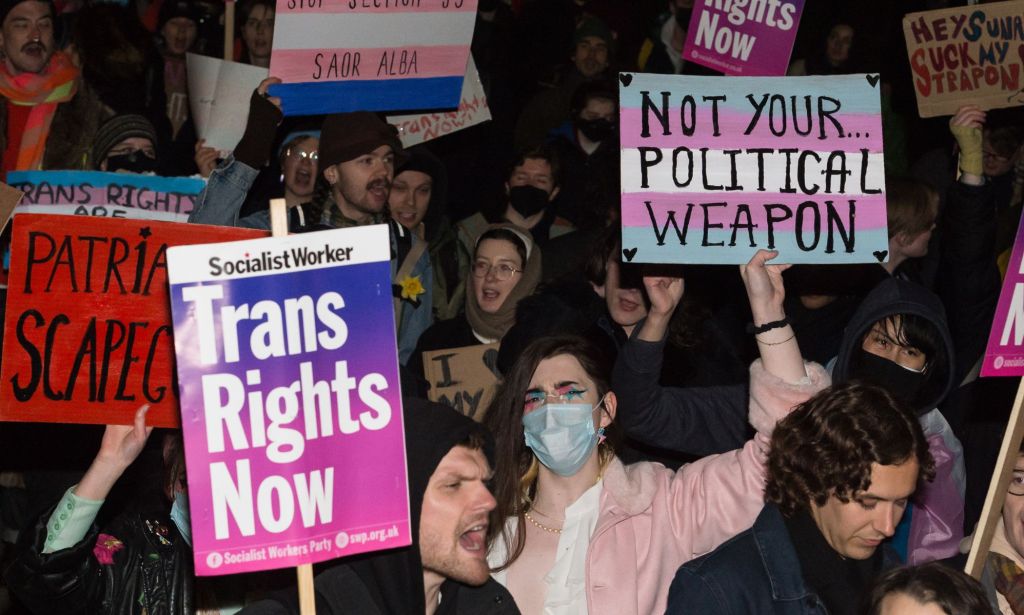Trans woman explains how UK’s gender recognition system is a ‘bureaucratic nightmare’

Dr Jane Hamlin wanted a Gender Recognition Certificate so she could feel “complete”. (Jane Hamlin)
Dr Jane Hamlin had been out as a trans woman for years when she decided to apply for a Gender Recognition Certificate. It wasn’t as straight-forward as she might have hoped.
Jane came out as trans to her wife in the mid-90s. But she lived a “hidden life” for about two decades.
Things changed when the Equality Act came into law in 2010. The legislation made being trans what’s known as a protected characteristic, making it illegal to discriminate.
“I thought: ‘Wow, I don’t need to hide anymore,'” Jane recalls. It gave her reassurance that she wouldn’t “be harassed” or “sacked” from her university job for being trans. So she asked herself: “Why am I hiding any further?”
In 2015, Jane decided to apply for a Gender Recognition Certificate (GRC). Introduced under a separate piece of law, the Gender Recognition Act 2004, they’re used to change the sex marker on birth, marriage, civil partnership and death certificate.
“I just wanted to be complete, to have evidence that this is how I was born,” Jane says.
Under UK law, evidence of living in your “affirmed gender” for the last two years is a requirement for a GRC, along with two medical reports written by separate healthcare professionals, including a diagnosis of gender dysphoria and details of any gender-affirming treatment or lack thereof.
The Scottish parliament recently attempted to simplify the process for Scottish trans people, passing a bill to remove these requirements and introduce a system of self-declaration.
The UK government decided to block the bill using a Section 35 order – which allows Westminster to prevent something the Scottish parliament has voted through to become law. It’s the first time such an order has been used since Scotland got devolved power.

The Scottish parliament wanted reform to make life easier for people like Jane, who produced a “huge pile of documentation” for her GRC including a “passport, driving licence, old birth certificate, marriage certificate, plus utility bills” to prove that she had been living as a woman.
Even so, this wasn’t enough.
“I sent them off… stuff showing I’d been Jane for I don’t know how many years, and they wrote back and said: ‘Well, you haven’t sent much for the last two years,” she explains.
“Because all you need to show is that you’ve been identifying as that person for two years.”
She found it difficult to provide some paperwork because she had a gender-neutral title, initials on some documents and some bills in her wife’s name. She says it’s no wonder people get tripped up during the process.
“How young people living at home or whatever managed to fill this when I have lived in the same house for donkey’s years and had such difficulties…. it’s no wonder people get turned down. The whole thing is just a bureaucratic nightmare.”
Hamlin says it’s “dispiriting” to see the Tory government attacking gender reform when, just a few years ago, the party promised to modernise such legislation for the entire UK. Theresa May supported a system like that which Scotland legislated for, but her stance was not adopted by any of her successors.
Liz Truss, as equalities minister, officially killed off plans for reform in 2020. Current prime minister Rishi Sunak supported blocking the Scottish reform, with his Scottish secretary Alister Jack claiming the bill would interfere with the Equality Act and the provision of single-sex spaces. Experts agree this isn’t true, and Nicola Sturgeon has said she will mount a legal challenge to the decision.
Jane is “baffled” by the Tories’ rhetoric, reiterating that gender recognition has nothing to do with the Equality Act.
“It’s about getting a new birth certificate and marriage certificate correctly gender marked and, eventually when you die, you assume that people will honour it,” Hamlin says. “I don’t understand why it’s causing such a fuss other than they hate trans people, Scots or both.”
How did this story make you feel?

